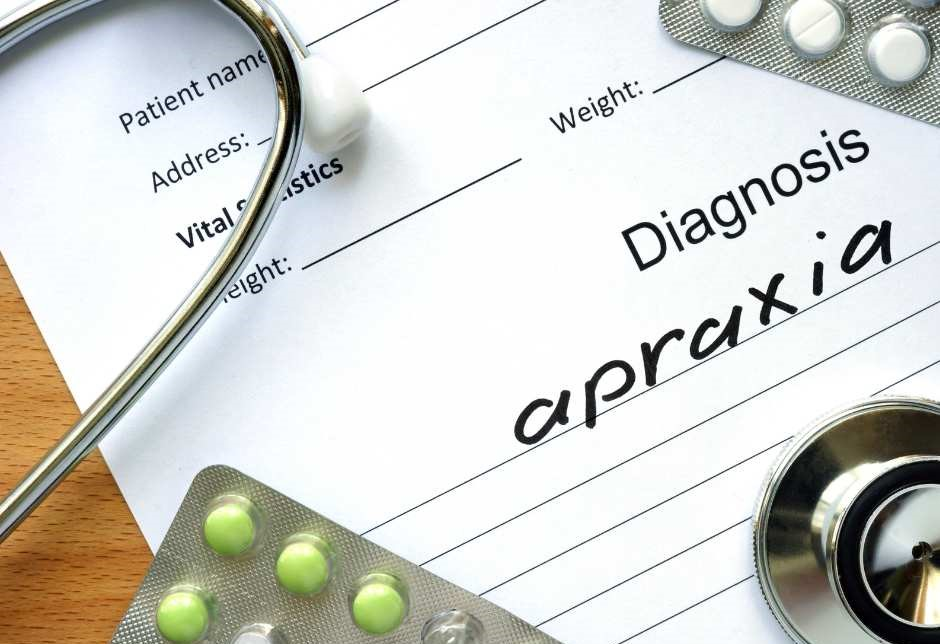Effective Treatment for Apraxia of Speech in Adults
Apraxia of speech is a motor speech disorder that affects adults, making it difficult to form words, pronounce sounds, and communicate effectively. Various treatment strategies and therapies can help adults with apraxia regain their speech and communication skills.
In this article, we will explore the nature of apraxia of speech, the role of speech-language pathologists in treating apraxia of speech in adults, and some of the different approaches that can be employed to improve speech in adults living with apraxia.
Key Points
Apraxia of speech in adults is a neurological motor speech disorder that impairs the ability to plan and coordinate the movements necessary for accurate speech production, resulting in difficulties with articulation and fluency.
Treatment for adult apraxia of speech involves a variety of approaches, including motor speech therapy techniques, sensory cueing methods, rate and rhythm control strategies, and the use of augmentative and alternative communication devices tailored to each individual's needs.
Speech-language pathologists play a critical role in diagnosing apraxia, developing personalized treatment plans, and providing therapy focusing on improving speech-motor control and communication skills. At the same time, support from caregivers at home is essential for reinforcing progress.
Understanding Verbal Apraxia in Adults
Role of Speech-Language Pathologists in Treatment
Motor Speech Therapy Approaches
Tips for Supporting Adults with Apraxia at Home
Frequently Asked Questions About Apraxia of Speech in Adults
Understanding Verbal Apraxia in Adults
Verbal apraxia, also known as apraxia of speech, is a communication disorder impacting the accurate production of speech sounds. Unlike other communication disorders like stuttering or aphasia, verbal apraxia doesn't stem from muscle weakness or paralysis.
Instead, apraxia of speech arises from difficulties in the brain's planning and coordination of the muscles used for speaking.
Individuals with apraxia of speech may experience significant communication challenges. The brain struggles to send the correct signals to the muscles, leading to difficulty in forming speech sounds.
Through speech-language therapy, individuals with apraxia of speech can learn strategies to improve their motor speech skills.
Types of Neurologic Speech and Language Disorders
Apraxia of speech affects motor speech planning, but it exists within a broader spectrum of neurogenic communication disorders arising from neurological (brain) damage. While diverse, apraxia of speech shares the common thread of difficulty initiating and coordinating the intricate muscle movements needed for speaking.
Understanding the connections and differences between other neurologic speech disorders is crucial for accurate diagnosis and tailoring treatment plans. Some related neurological speech and language disorders include:
Aphasia: This language disorder impacts various aspects of language, including comprehension, expression, reading, and writing. While some forms can present similar symptoms to apraxia, the core difficulty lies in processing and understanding language rather than speech movement planning.
Dysarthria: This neurologic speech disorder affects muscle control and coordination used for speech production, impacting articulation, clarity, and prosody. Some individuals with apraxia might also experience dysarthria, further complicating their communication abilities.
Oral apraxia: While distinct from apraxia of speech, it's essential to differentiate. Oral apraxia affects non-speech oral movements like sticking out the tongue or blowing, not impacting speech production.
Types of Motor Speech Disorders
While diverse symptoms of apraxia of speech may suggest a single condition, several distinct motor speech disorders exist, each impacting communication in unique ways, let's explore three primary types:
Acquired Apraxia of Speech (AOS):
The most common form often arises after a stroke or traumatic brain injury.
Severity ranges from minor stumbles on specific words to complete loss of intelligible speech.
Individuals understand language but struggle to coordinate necessary mouth and tongue movements.
Treatments like melodic intonation therapy can help regain control over speech production.
Progressive Apraxia of Speech (PAS):
A rarer neurodegenerative disease that progressively weakens the nervous system, impacting speech.
Speech becomes increasingly challenging as the disease progresses, despite the ability to perform similar movements unconsciously in other contexts.
Currently, no cure exists, but speech therapy can optimize communication skills and support quality of life.
Developmental Apraxia of Speech (CAS):
Distinct from acquired and progressive forms, CAS first appears in childhood and is not caused by muscle weakness.
An underlying processing difficulty affects motor planning and coordination, making it difficult to imitate spoken speech movements.
This impacts speech production beyond words, affecting non-speech oral activities like eating and blowing bubbles.
CAS requires specialized therapy approaches to address motor planning and communication.
Oral Apraxia vs. Verbal Apraxia:
While both involve motor planning difficulties, they target different aspects of communication:
Oral Apraxia: Affects non-speech oral movements like sticking out the tongue, not impacting speech production directly.
Verbal Apraxia: Directly impacts speech production, making it challenging to form sounds, words, and sentences despite understanding the language.
Symptoms and Challenges
Speech apraxia in adults in diverse ways, often affecting their ability to achieve specific oral muscular phonetic targets. This translates into various symptoms and challenges:
Distorted phonemes: Difficulty forming accurate sounds due to trouble coordinating the tongue, lips, and jaw movements.
Reduced speech rate: Slow, halting speech caused by the effort to plan and execute specific sound sequences.
Inconsistent stress and intonation: Variations in rhythm and emphasis due to challenges modulating speech prosody.
Word retrieval difficulties: Inability to access and produce specific words despite understanding their meaning.
Syllable segmentation issues: Difficulty breaking down words into smaller sound units, impacting clarity and fluency.
These combined limitations affect verbal and non-verbal communication, making it challenging for individuals with apraxia of speech to express themselves effectively.
The impact of apraxia can extend beyond verbal communication. Difficulties executing specific oral muscular movements like tongue protrusion or lip closure can lead to challenges with eating and drinking, further impacting daily life.
By understanding the diverse symptoms and challenges associated with apraxia of speech, we can tailor specific treatments and support systems to empower individuals to overcome these obstacles and communicate effectively. Remember, early intervention and personalized therapy can significantly improve communication outcomes and quality of life for those with this disorder.
Role of Speech-Language Pathologists in Treatment
Speech-language pathologists (SLPs) play a significant role in diagnosing and treating speech apraxia in adults. They possess extensive training and proficiency in assessing and treating communication disorders, including apraxia of speech.
Speech-language pathologists are essential in diagnosing apraxia of speech based on the pattern of speech issues observed and utilizing their expertise to devise individualized treatment plans to address the particular needs of individuals with apraxia.
By focusing on the individual needs and goals of a patient with apraxia, speech-language pathologists can develop a customized treatment plan that incorporates a combination of:
Sensory cueing methods
Rate and rhythm control approaches
The use of augmentative and alternative communication (AAC) devices
Diagnosis Process
Understanding an individual's unique struggles is crucial for effective treatment, and that's precisely what speech-language pathologists do when diagnosing and treating apraxia of speech in adults. Their approach involves a comprehensive evaluation process that dives deep into various aspects of communication:
Speech Production: The speech-language pathologist will carefully assess the ability to produce individual sounds, words, and sentences, looking for any difficulties in articulation, clarity, and fluency.
Oral Motor Skills: An oral motor examination evaluates the strength, coordination, and flexibility of the mouth, lips, tongue, and jaw, identifying any limitations that impact speech production.
Phonological Awareness: This explores the understanding of the sound structure of language, including the ability to break down words into syllables and identify individual sounds.
Language Abilities: A language evaluation looks at overall language skills, including language comprehension, spoken language skills, vocabulary, and grammar, to identify potential communication impairments.
Medical History and Hearing: Reviewing medical history and hearing test results helps ensure a complete picture and rule out other potential causes of communication difficulties.
Remember, accurate diagnosis and personalized treatment are the cornerstones of effective intervention.
Developing a Customized Treatment Plan
Following a comprehensive evaluation, SLPs create individualized treatment plans for individuals with speech apraxia. These plans draw upon a diverse toolbox of evidence-based treatment approaches to address the specific motor planning and coordination challenges affecting speech production. Here, we delve into some key strategies and treatment approaches:
1. Sensory Cueing: Incorporating visual (seeing), auditory (hearing), or tactile (touching) cues can provide valuable prompts and feedback for the brain and motor system. Incorporating cues acts as reminders, aiding individuals in producing specific sounds or sequences during speech attempts. Examples include visual cues like mouth shapes or auditory cues like rhythmic tapping.
2. Rate and Rhythm Control: Modifying speech rate and introducing rhythmic patterns can facilitate speech production for individuals with apraxia. Slowing down speech allows for more deliberate planning and execution of movements, while rhythmic cues offer a structure to guide articulation.
3. Augmentative and Alternative Communication (AAC): The speech-language pathologist might incorporate AAC devices into the treatment plan when spoken communication proves challenging. AAC tools, ranging from picture boards to speech-generating devices, empower individuals to express themselves effectively and enhance their overall communication participation.
Understanding that these approaches are not employed in isolation is crucial. SLPs strategically combine and adapt different techniques based on individual needs and progress.
Motor Speech Therapy Approaches
Here, we examine two notable approaches to target improved and functional communication: the Articulatory Kinematic Approach (AKA) and the Speech-Motor Learning Approach (SMLA).
1. Articulatory Kinematic Approach (AKA):
Focus: Enhances articulatory accuracy for improved intelligibility.
Techniques: Articulatory cueing and integral stimulation guide motor planning and coordination for speech production.
Evidence: Strong support for effectiveness, particularly in improving articulatory precision and coordination, leading to enhanced speech intelligibility.
Principles: Multiple Input Phoneme Therapy (MIPT), practice schedules, and repetition, leveraging motor learning principles for significant improvement.
2. Speech Motor Learning Approach (SMLA):
Focus: Progresses from more straightforward speech targets to complex sounds using various signals for movement shaping.
Stimuli: Non-words assist in constructing and maintaining precise motor plans for speech production.
Principles: Stimulates and improves speech production by applying motor learning principles.
Effectiveness: Demonstrated in studies, incorporating principles like:
Pre-practice
Numerous trials
Distributed practice
Variable and random practice
Complex practice
Outcome: Aims to address motor planning and programming challenges, enabling individuals to develop accurate and fluent speech skills.
Key Takeaways:
Both AKA and SMLA offer comprehensive interventions for apraxia of speech in adults.
These approaches address the core issue of motor planning and coordination difficulties.
Both utilize evidence-based principles, effectively improving speech production and communication skills.
The choice of approach depends on individual needs and SLP expertise.
Sensory Cueing Techniques
Sensory cueing techniques offer a valuable intervention approach by utilizing sensory input to guide speech movement sequences. Let's explore two prominent techniques: Integral Stimulation (IS) and PROMPT Therapy.
1. Integral Stimulation (IS):
Approach: Step-by-step practice of speech movements using phonemic word lists.
Focus: Improves motor planning and coordination for speech production.
Mechanism: Breaks down complex movements into smaller components, gradually building towards more challenging speech targets.
Evidence: Studies demonstrate effectiveness in improving motor learning and speech production in adults with AOS.
Outcome: Enhances speech intelligibility and communication skills by decomposing speech and progressing systematically.
2. PROMPT Therapy:
Approach: Tactile-sensory method using touch pressure, kinesthetic signals, and proprioceptive cues.
Focus: Restructuring oral muscular movements for improved sound production, rate, and prosody.
Mechanism: Provides physical, tactile prompts to guide articulator movement.
Cues: Touch pressure, kinesthetic cues, and proprioceptive cues.
Evidence: Demonstrated effectiveness in treating AOS by addressing specific motor planning challenges.
Outcome: Develops accurate and fluent speech production skills by targeting precise articulation.
The Power of Sensory Cues:
Both IS and PROMPT Therapy leverage sensory input to address the core motor planning difficulties in AOS. IS provides a structured practice pathway, while PROMPT offers real-time feedback through physical cues. Both approaches can significantly improve speech production and communication skills in adults with AOS by:
Enhancing awareness of speech movements: Sensory cues provide feedback on articulator positioning and movement, improving proprioception and kinesthetic sense.
Guiding motor planning: Cues act as prompts, assisting individuals in planning and executing complex speech movements accurately.
Facilitating motor learning: Repetitive practice with sensory feedback reinforces correct movement patterns, promoting correct production of mouth movements.
Remember, effective intervention for apraxia of speech requires personalized treatment plans designed by qualified speech-language pathologists.
Tips for Supporting Adults with Apraxia at Home
Supporting adults with apraxia of speech at home is vital in helping them overcome the challenges of their condition and enhance their overall communication abilities. Practicing speech exercises at home can significantly boost the effectiveness of speech therapy, as it enables individuals with apraxia to reinforce the skills they've learned during therapy sessions.
Encourage the individual to practice with their communication partner, using exercises and techniques recommended by their speech therapist.
Patience is critical when communicating with individuals with apraxia of speech, as it might take longer to communicate. Demonstrating patience, understanding, and support while communicating with someone with apraxia can create a nurturing and encouraging atmosphere.
Maintaining open lines of communication with the person's speech therapist and actively participating in their speech therapy process can further help support adults with apraxia of speech at home and during therapy sessions.
Frequently Asked Questions About Apraxia of Speech in Adults
1. What are the symptoms and challenges associated with apraxia of speech in adults?
Adults with apraxia of speech struggle to produce speech sounds accurately due to difficulty planning and coordinating mouth movements. This results in symptoms like distorted sounds, slow speech, and inconsistent pronunciation, leading to communication challenges and frustration. Individuals may also experience problems in oral movements, impacting activities like eating and drinking.
2. How is apraxia of speech diagnosed in adults?
Adults with suspected apraxia of speech undergo a speech-language evaluation by a certified professional. This typically involves testing speech sound production, oral-motor skills, and language comprehension to differentiate it from other speech disorders.
3. Can apraxia of speech be treated online?
Yes, apraxia of speech can be treated online! While in-person therapy offers benefits like hands-on techniques, online therapy provides convenient access and flexibility, making it a valuable tool for managing the condition.
How Connected Speech Pathology Can Help You
Apraxia of speech (AOS) presents unique communication hurdles, but you don't have to face them alone. Connected Speech Pathology offers effective treatment for apraxia of speech in adults, even through remote therapy sessions.
Our licensed speech-language pathologists (SLPs) conduct thorough assessments online, evaluating your speech production, oral-motor skills, and language comprehension. This paves the way for a personalized treatment plan tailored to your needs. Using evidence-based approaches like melodic intonation therapy and visual/auditory cueing, our SLPs guide you through targeted exercises, helping you master specific sounds, words, and phrases.
All this happens remotely, eliminating travel hassles and geographical barriers and offering convenient, accessible care. With consistent effort and our expert support, you can regain your voice and confidently navigate communication challenges. Schedule a free consultation today and start your journey towards improved speech with Connected Speech Pathology.
Summary
In conclusion, treating apraxia of speech in adults requires a comprehensive approach that addresses each individual's specific challenges and needs. Individuals with apraxia can improve their speech production and overall communication abilities by employing various treatment strategies and therapies, such as motor speech therapy approaches, sensory cueing techniques, rate and rhythm control methods, and augmentative and alternative communication (AAC) devices.
With the support of speech-language pathologists, caregivers, and loved ones, adults with apraxia of speech can overcome their communication challenges and lead fulfilling lives.
About the Author
Allison Geller is a speech-language pathologist (SLP) and the owner of Connected Speech Pathology. She obtained her Bachelor’s and Master’s degrees from the University of Florida in Speech-Language Pathology. Allison has practiced speech therapy in a number of settings including telepractice, acute care, outpatient rehabilitation, and private practice. She has worked extensively with individuals across the lifespan including toddlers, preschoolers, school-aged children, and adults. She specializes in the evaluation, diagnosis, and treatment of a variety of communication disorders including receptive/expressive language disorders, articulation disorders, voice disorders, fluency disorders, brain injury, and swallowing disorders.
Allison served as the clinical coordinator of research in aphasia in the Neurological Institute at Columbia University Medical Center in New York. She is on the Board of Directors for the Corporate Speech Pathology Network (CORSPAN), a Lee Silverman Voice Treatment (LSVT) certified clinician, and a proud Family Empowerment Scholarship/Step-Up For Students provider. Allison is passionate about delivering high quality-effective treatment remotely because it’s convenient and easy to access. What sets us apart from other online speech therapy options is—Allison takes great care to hire the very best SLPs from all over the country.








